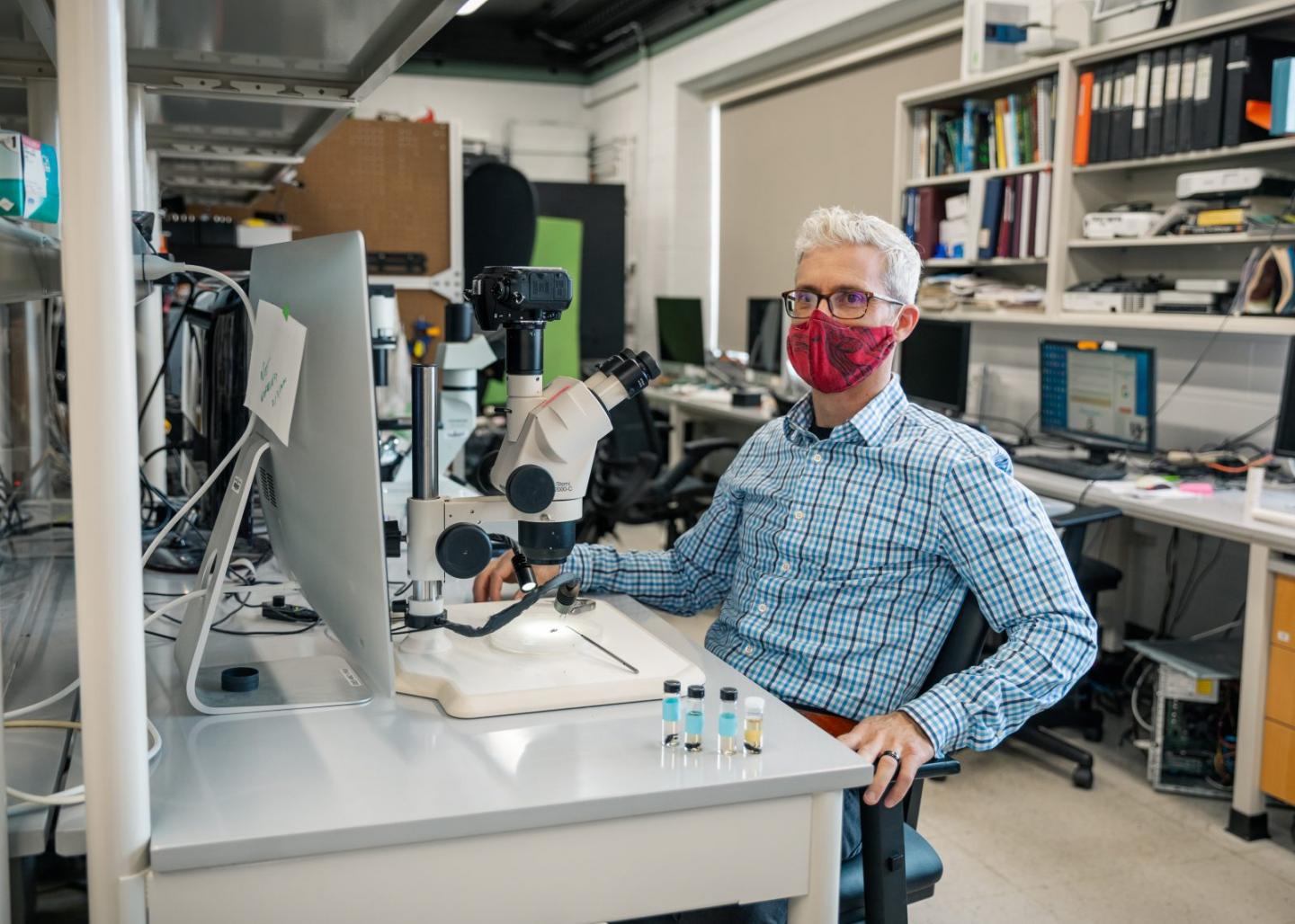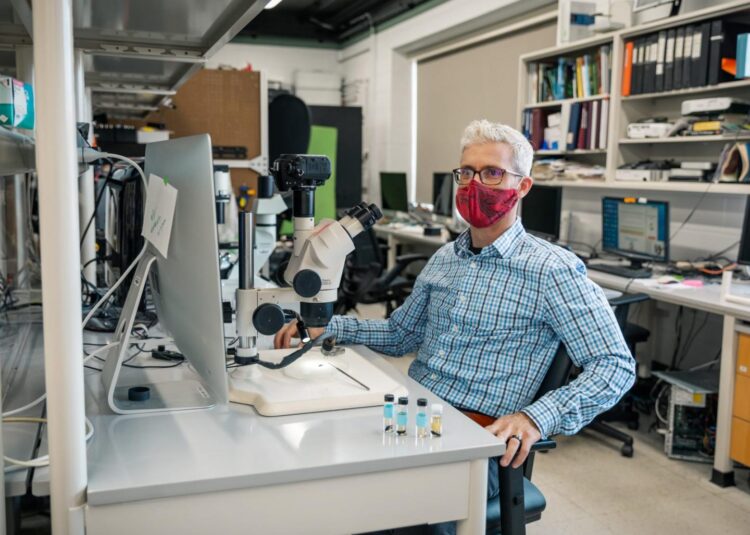
Credit: Virginia Tech
Did you know that fleas, ants, and click beetles are capable of blazingly fast accelerations, with some up to 10^6 meters per square-second? Their quick movements make fast animals like the cheetah look like slowpokes.
A new study by a team that included Jake Socha, professor in biomedical engineering and mechanics in Virginia Tech’s College of Engineering, published in the journal Proceedings of the National Academies of Sciences shows that a snap-through unbending movement of the body is the main reason for the clicking beetle’s fast acceleration.
Most animals use muscle to move. For example, when we want to bend our elbow, our biceps and triceps contract. A muscle contracts by shortening to cause movement. In a small animal, such as the click beetle, muscle power is minimal due the muscles’ small size, so quick movement happens in unique ways.
Take the three-phase process behind the beetle’s clicking maneuver: latching, spring loading, and energy release. The insect amplifies its muscle power by using its muscle to initiate a series of springs and latches that trigger energy release, resulting in fast movement. The latches and springs enable the animal to bend its body and then unbend quickly, which results in a clicking motion, often resulting in a jump. Much is known about the jumping motion, but less is known about the quick unbending that comes before it.
Previously, the click beetle’s small size and the internal locations of many of the parts of the system used in unbending posed a challenge to those studying these mechanisms. This is the first time the physical mechanisms of the internal spring in click beetles have been observed and measured using high-speed X-ray.
Socha worked on the study as part of a team of interdisciplinary experts, including Ophelia Bolmin, Aimy Wissa, and Alison Dunn, all in mechanical science and engineering at the University of Illinois at Urbana-Champaign; Marianne Alleyne, in entomology at the University of Illinois at Urbana-Champaign; and Kamel Fezzaa at Argonne National Laboratory.
As part of the three-phrase process, click beetles jump using a unique hinge-like tool in their thorax, just behind the head. Researchers used high-speed synchronton X-ray imaging at Argonne to analyze the beetle’s motion of the hinge used for bending and unbending.
“The hinge mechanism has a peg on one side that stays latched onto a lip on the other side of the hinge,” Alleyne said. “When the latch is released, there is an audible clicking sound and a quick unbending motion that causes the beetle’s jump.”
The click beetle’s latch is located on the underside of its body, between the front and middle legs, composed of two hard parts of the exoskeleton. Prior to a click, the beetle stores energy in the system. When the latch is released, all of that energy is released and the front of the body rapidly flexes – the quick unbending – which throws the beetle into the air at a fast acceleration.
While investigating that process, the researchers discovered a portion of the spring mechanism used to store and quickly release energy in the click beetle. They found that the spring and latch mechanism located in the thorax could generate extreme accelerations when performing the clicking maneuver, reaching accelerations of more than 300 times that of the Earth’s gravitational acceleration. This acceleration is what enables the beetles to launch itself into the air, to flip itself over or to move elsewhere.
The latch and spring mechanisms in these animals are similar to a bow and arrow, Socha explained. When launching the arrow with a bow, you pull the arrow back with your arm muscles and the energy is transferred to the bow and string. The energy is stored there until you release the arrow. The string recoil – when launching the arrow – has a much greater acceleration and power than if you were to throw the arrow using muscle power alone.
The team also found that nonlinear damping and elastic forces are behind the ultrafast release and snap-through buckling, a form of dynamic instability which enables the beetle to move quickly between two locations.
“We were surprised to find that the beetles use these basic engineering principles,” said Wissa. “If an engineer wanted to build a device that jumps like a click beetle, they would likely design it the same way nature did. This work turned out to be a great example of how engineering can learn from nature and how nature demonstrates physics and engineering principles.”
This discovery enabled researchers to develop an analytical framework that can be used to uncover the physical mechanics governing ultrafast motion in other small animals. Understanding how these small animals can generate extreme acceleration could lead to breakthroughs in small-scale robotics and small devices, potentially using similar snap-through methods to release energy on demand to produce ultrafast movements.
“Click beetles are fun to play with,” said Socha. “Flip them on their back, and they pop into the air. But now we know that they’re even cooler than that. It’s exciting to discover that they evolved the mechanical trick of snap-through buckling, similar to a kids’ jumping popper toy.”
Socha is also the director of Biological Transport (BIOTRANS) at Virginia Tech. Wissa is also affiliated with aerospace engineering and the Carle Illinois College of Medicine. Dunn is also affiliated with the Carle Illinois College of Medicine and RAILtec. Alleyne is also affiliated with mechanical science and engineering and the Beckman Institute for Advanced Science and Technology at Illinois.
###
— Written by Laura McWhinney
Media Contact
Suzanne Irby
[email protected]
Original Source
https:/





